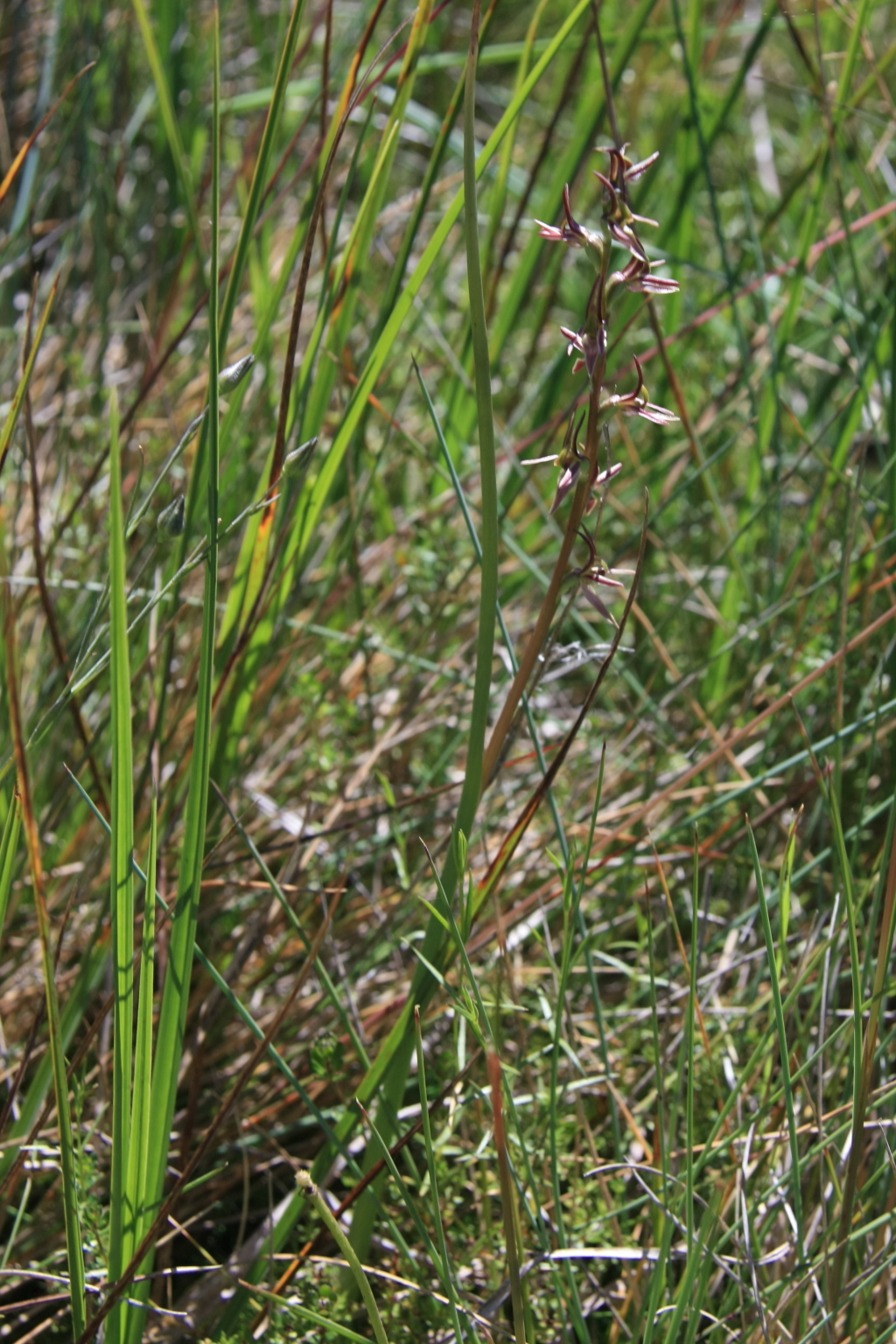Prasophyllum sphacelatum
D.L.JonesFlowering stem 20–40 cm tall, stout. Leaf-blade 8–15 cm long, erect to flaccid, tip senescent at flowering time, 2–4 mm diam. at base. Flowers 8–18, well-spaced to moderately crowded, green to reddish brown, fragrant, in a spike 8–14 cm long; ovary obovoid, to 4 mm long; sepals 6.5–10 mm long, dorsal sepal ovate-lanceolate, acute, lateral sepals ranging from completely free to mostly connate, with recurved apices; petals linear to linear-lanceolate, 6.5-8 mm long, projecting forward, sometimes incurved towards apex. Labellum 6–7.5 mm long, ovate-lanceolate, distinctly clawed, recurved near middle, greenish to pinkish, margins incurved near middle; callus often greenish, prominently raised, shiny, covering most of labellum lamina and extending almost to the apex. Column appendages green, broadly obovate, to 2 mm long. Flowers Dec.–Feb.
EGU, HSF, HNF, MonT, VAlp. Also NSW, ACT, Tas. Confined to alpine and subalpine meadows, herbfields and snowgum woodlands, often in moist to wet areas among tussock grasses.
Formerly confused with Prasophyllum alpinum, but that species has smaller, greenish flowers and is confined to Tasmania. Prasophyllum tadgellianum is a more diminutive species with smaller flowers and the leaf-blade is stiff and green at flowering time.
Plants from the Mt Cobberas area tend to have slightly larger flowers, but there is considerable variation in flower size across the geographical range and taxonomic recognition would appear unjustified.
 Spinning
Spinning
